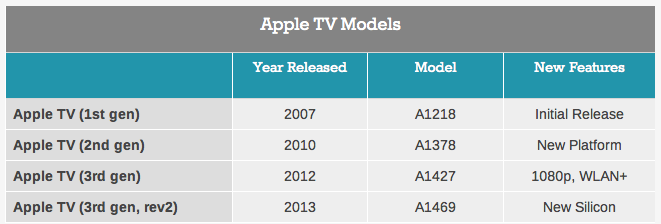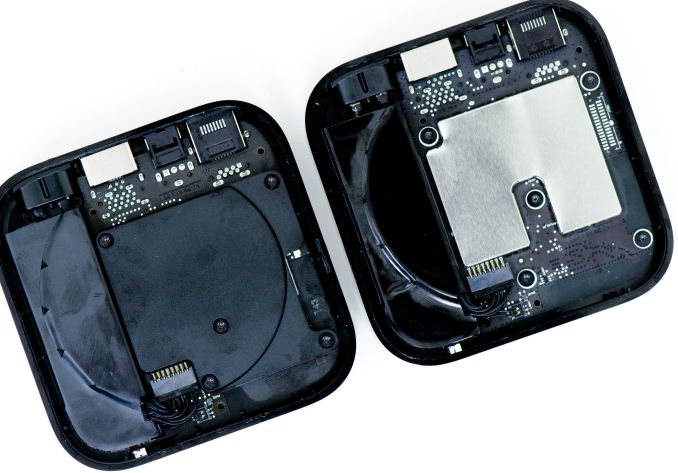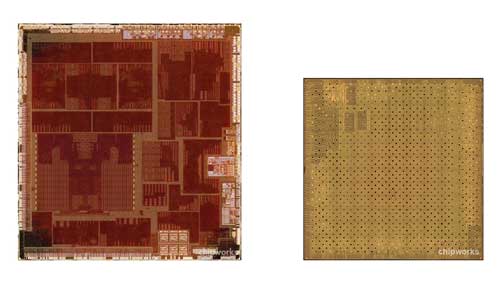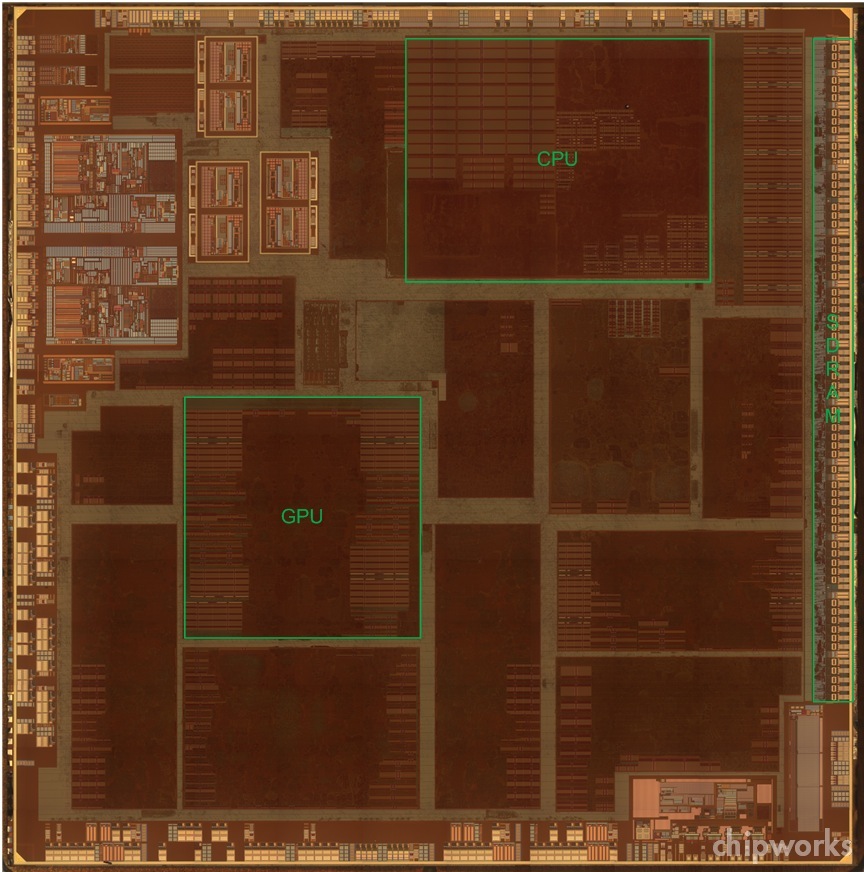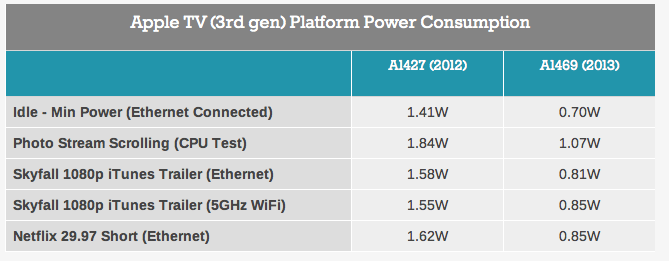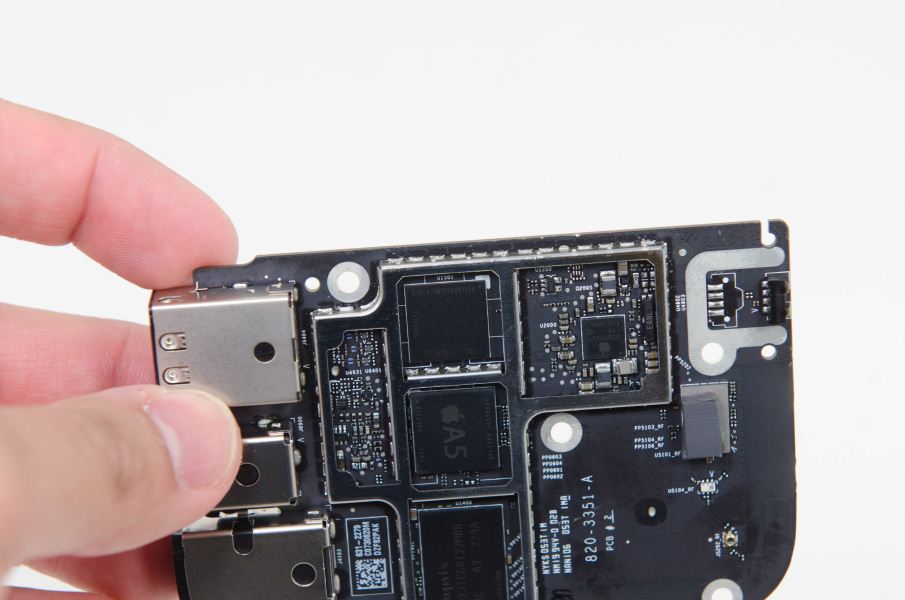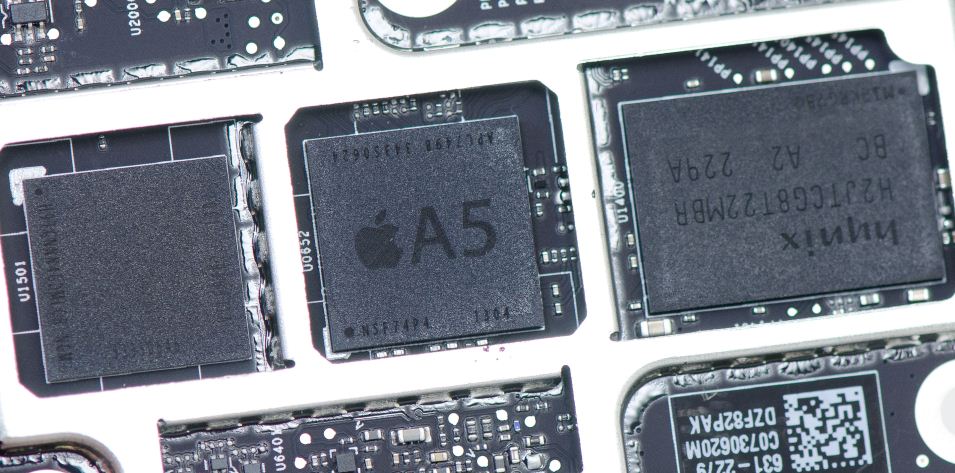Apple shipped five million Apple TVs last year for a nearly $500 million in additional revenue. That’s a very successful hobby and while talk of Tim Cook & Co. building a standalone HD TV set remains just that – rumor mongering – Apple has quietly retooled the $99 set-top box, with most of the under-the-hood tweaks aimed at optimizing production costs.
AnandTech took a peek inside the gadget and found some minor changes. The publication found a significant reduction in the new model’s power consumption, directly related to the optimized A5 chip, leading AnandTech to speculate that perhaps Apple could use this chip for another device, “perhaps one powered by a battery” (hint: iWatch)…
The reworked Apple TV carries a model number of A1469, as opposed to the 2012 Apple TV model number A1427. “Internally the name of the game is cost reduction,” writes AnandTech’s Anand Lal Shimpi.
Indeed, the new model a metal slab from the top of the montherboard to the bottom of the chassis for easier and less expensive assembly.
The 2012 Apple TV (left) model A1427 and the 2013 A1469 model (right).
The power supply is the same 3.4V, 1.75A module as before and the face of the motherboard shows rearranged components. Apple engineers moved to a highly integrated ceramic package from USI for the WiFi/BT solution, which saved a good amount of board area.
They also went back to a new Broadcom Wi-Fi chip and a single antenna design (though this won’t affect your Wi-Fi performance), further reducing complexity from the short stint with the dual-antenna design in the A1427 model.
The die-shrink single-core Apple A5 chip is nearly 50 percent smaller than the A5 package from the 2012 Apple TV variant: 37.8mm² versus 69mm² in the previous A5 design. Chipworks has a nice side-by-side comparison of the 2012 (left) and 2013 (right) Apple TV’s processor.
AnandTech confirms Chipworks’ findings: Apple actually removed one CPU core versus just disabling it, like with last year’s Apple TV processor (the dual-core GPU remains untouched). The smaller A5 also no longer integrates DRAM on the chip – it’s a discrete component now.
The die-shrunk A5 floorplan courtesy of Chipworks.
The smaller die and external DRAM both simplify chip production and therefore impact cost. Actually, that’s the reason why Apple in this new Apple TV opted for a customized A5 variant rather than continue to ship die-harvested A5 chip from earlier iPhones and iPads.
The problem with relying exclusively on die harvesting is that eventually, as yields improve, you end up selling fully functional (and unnecessarily expensive) silicon into a market that’s unwilling to pay for the added performance.
If you’ve got the volumes to justify it, it usually makes sense to bring out custom silicon for major price points.
Apple might have other plans for the smaller A5, including using it in another device entirely (hint: budget iPhone).
Chipworks acknowledged as much yesterday:
Maybe Apple now thinks that sales will be enough to justify a dedicated part, or maybe we are going to see another single-core device in a different product line.
AnandTech also tested the new and old model’s power consumption and walked away impressed by the 2013 model’s noticeably smaller power draw.
As you can see from the table above, the 2012 Apple TV maxed at around 1.6W, while the 2013 model tops out at just a watt, for a cool 800mW power saving.
The significant power reduction could be attributed to the new A5 chip design because there are no other major changes to the set-top box’s innards or the chip’s process technology (it’s still being fabbed on Samsung’s 32-nanometer process).
This is the 2013 Apple TV motherboard. Note how tiny the A5 processor is.
Assuming you’re using the Apple TV for watching video eight hours a day, every day of the year, the new Apple TV would save about $0.26 per year on your power bill (assuming $0.11/kWh). “You’d break even on the $99 cost of a new Apple TV in about 385 years”, the publication notes.
A closeup of the new die-shrunk A5 component inside the retooled Apple TV
The writer opines that the significant power reduction “is the only thing that makes me wonder if this new A5 silicon isn’t destined for another device, perhaps one powered by a battery,” in what could be interpreted as a nod to a rumored iWatch, where Apple is reportedly facing battery challenges with early smartwatch prototypes.
AnandTech sums up:
The small increment in model gives you an indication of the magnitude of change here. No new functionality is added, but the device just gets cheaper for Apple to make.
All told, looks like Apple at the very least invested in making this year’s Apple TV cheaper to manufacture, which makes sense given growing sales and tiny profit margin on the $99 device.
Apple’s semiconductor teams employ more than a thousand talented engineers that don’t come cheap, headed by SVP Bob Mansfield to heads the new Technologies unit which encompasses Apple’s wireless and semiconductor teams.
If Apple decided that reducing the size of the A5 chip was worth the effort, so be it.
It is my opinion, however, there’s more to this than meets the eye and that we might as well see this smaller and more energy efficient processor find its way into some unreleased products.
What’s your read of the situation?
